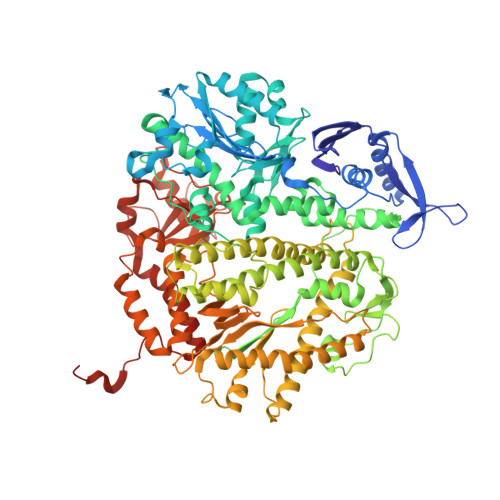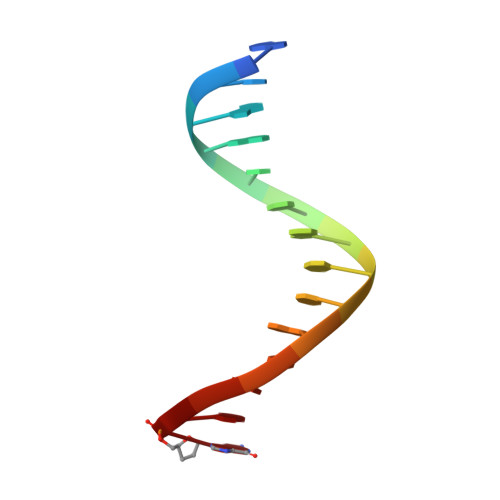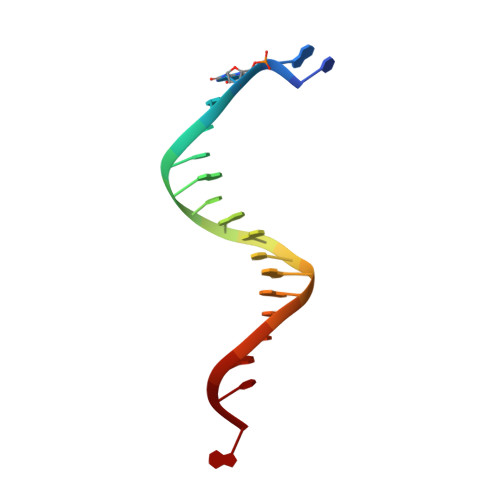Kinetics of mismatch formation opposite lesions by the replicative DNA polymerase from bacteriophage RB69.
Hogg, M., Rudnicki, J., Midkiff, J., Reha-Krantz, L., Doublie, S., Wallace, S.S.(2010) Biochemistry 49: 2317-2325
- PubMed: 20166748
- DOI: https://doi.org/10.1021/bi901488d
- Primary Citation of Related Structures:
3LDS - PubMed Abstract:
The fidelity of DNA replication is under constant threat from the formation of lesions within the genome. Oxidation of DNA bases leads to the formation of altered DNA bases such as 8-oxo-7,8-dihydroguanine, commonly called 8-oxoG, and 2-hydroxyadenine, or 2-OHA. In this work we have examined the incorporation kinetics opposite these two oxidatively derived lesions as well as an abasic site analogue by the replicative DNA polymerase from bacteriophage RB69. We compared the kinetic parameters for both wild type and the low fidelity L561A variant. While nucleotide incorporation rates (k(pol)) were generally higher for the variant, the presence of a lesion in the templating position reduced the ability of both the wild-type and variant DNA polymerases to form ternary enzyme-DNA-dNTP complexes. Thus, the L561A substitution does not significantly affect the ability of the RB69 DNA polymerase to recognize damaged DNA; instead, the mutation increases the probability that nucleotide incorporation will occur. We have also solved the crystal structure of the L561A variant forming an 8-oxoG.dATP mispair and show that the propensity for forming this mispair depends on an enlarged polymerase active site.
Organizational Affiliation:
Department of Microbiology and Molecular Genetics, 95 Carrigan Drive, University of Vermont, Burlington, Vermont 05405, USA.



















